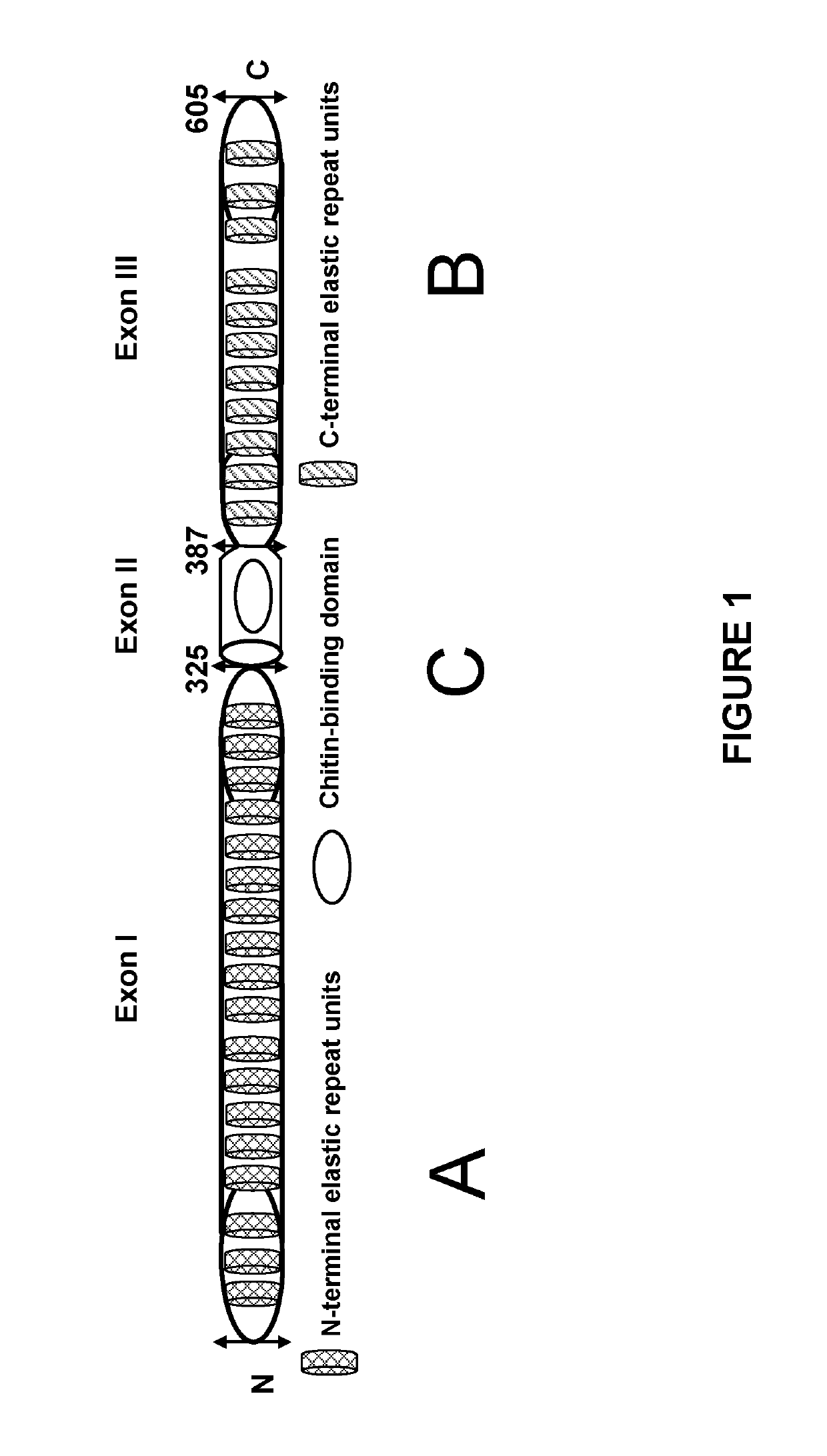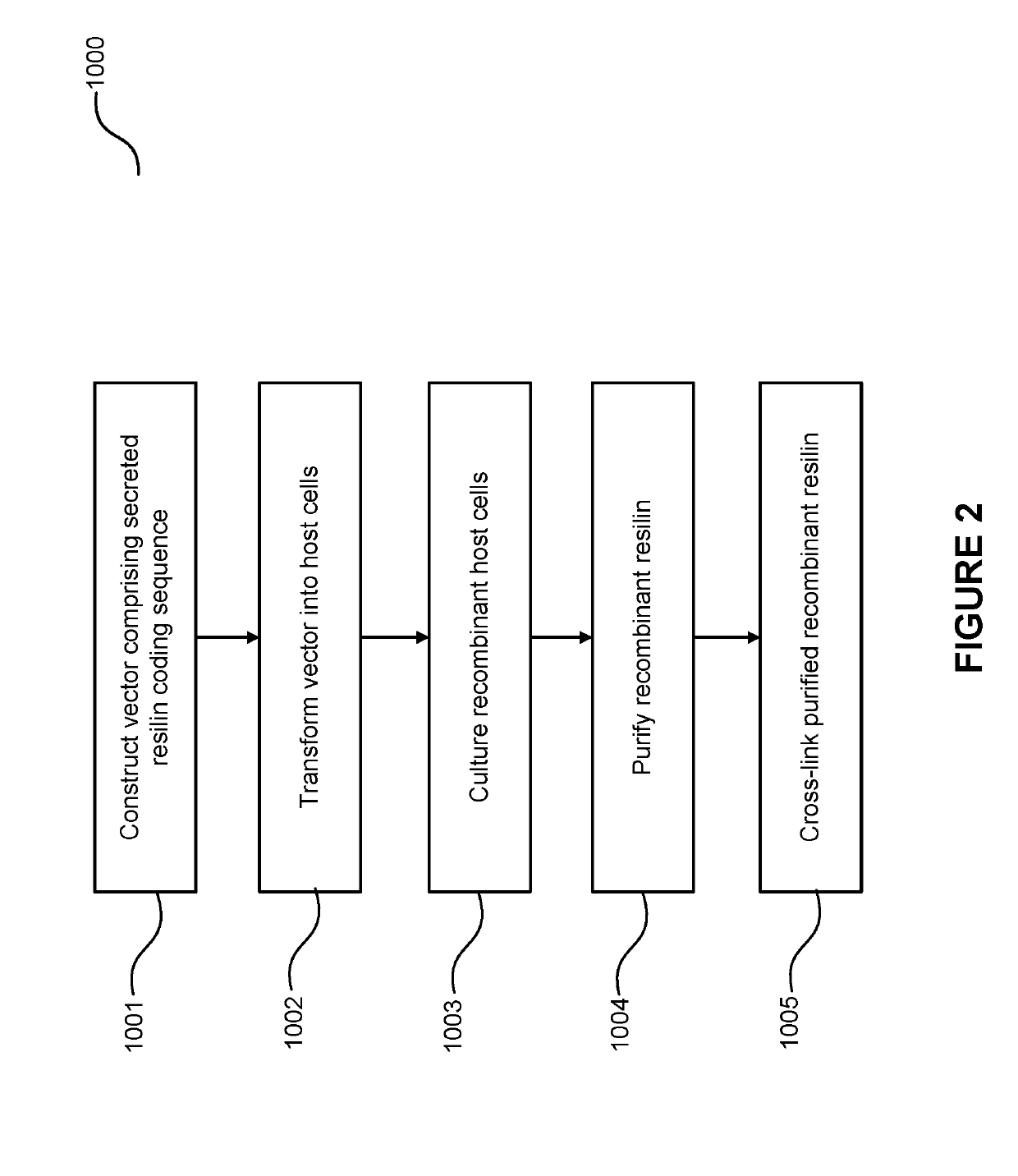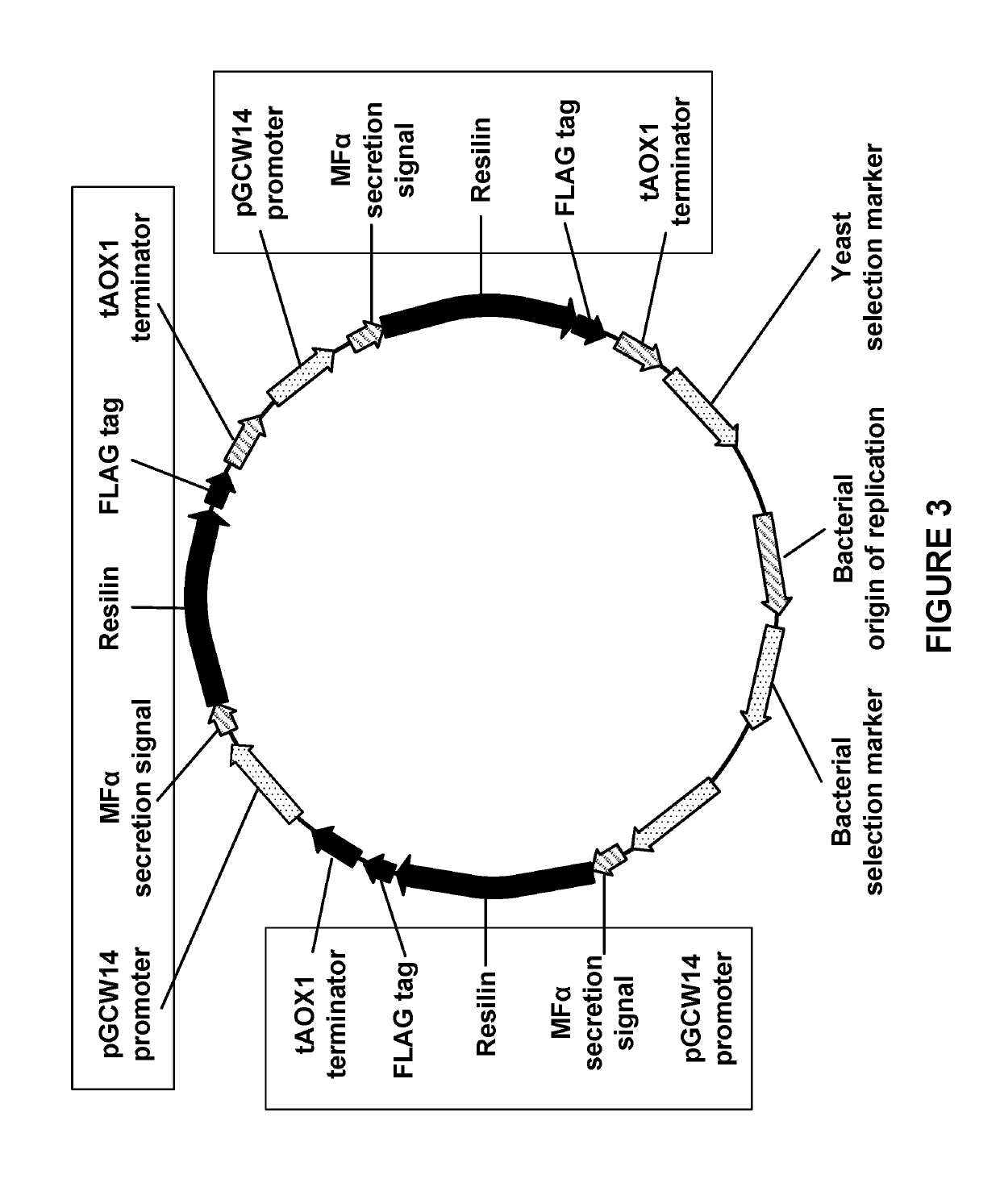Elastomeric Proteins
- Summary
- Abstract
- Description
- Claims
- Application Information
AI Technical Summary
Benefits of technology
Problems solved by technology
Method used
Image
Examples
example 3
[0144]The non-FLAG-tagged Ds_ACB and Ae_A polypeptides were chosen for purification and cross-linking. Strains RMs1221 (expressing Ds_ACB) and RMs1224 (expressing Ae_A) were grown in 500 mL of BMGY in flasks for 48 hours at 30° C. with agitation at 300 rpm.
[0145]The protocol for purification was adapted from Lyons et al. (2007). Cells were pelleted by centrifugation, and supernatants were collected. Proteins were precipitated by addition of ammonium sulfate. The precipitated proteins were resuspended in a small volume of phosphate buffered saline (PBS), and the resuspended samples were dialyzed against PBS to remove salts. The dialyzed samples were then heated to denature native proteins, and denatured proteins were removed by centrifugation. The retained supernatants contained the purified resilin polypeptides. Optionally, the retained supernatants were chilled, which caused coacervation, resulting in a concentrated lower phase and dilute upper phase.
[0146...
example 4
king of Purified, Secreted, Recombinant Resilin
[0147]Concentrated Ds_ACB resilin was cross-linked via one of two methods: photo cross-linking (adapted from Elvin et al. 2005) and enzymatic cross-linking (adapted from Qin et al. 2009).
[0148]For photo cross-linking, resilin protein was mixed with ammonium persulfate and tris (bipyridine) ruthenium (II) ([Ru(bpy)3]2+). The mixture was exposed to bright white light, after which the mixture formed a rubbery solid.
[0149]For enzymatic cross-linking, resilin protein was mixed with horseradish peroxidase (HRP) and hydrogen peroxide. The mixture was incubated at 37° C., after which the mixture formed a rubbery solid.
example 5
n of a Block of Recombinant Resilin
[0150]Strain RMs1221 (expressing the Ds_ACB resilin) was run in two 2 L fermentation tanks to produce a larger quantity of protein.
[0151]The strain was grown in a minimal basal salt media with 15 g / L of glucose as a starting feedstock and 1 g / L L81 antifoam, in a stirred fermentation vessel controlled at 30° C., with 1 VVM of air flow and minimum agitation of 700 rpm. The pH of the fermentation was controlled at 5 with on-demand addition of ammonium hydroxide. Once batch glucose was depleted, glucose was added via a programmed feed recipe that was designed to maintain the oxygen uptake rate 120 mmole / L / h, the temperature was decreased to 25° C., and dissolved oxygen was maintained at 20%. The fermentation was harvested after 70 hours, at about 700-800 OD of cell density.
[0152]The protein was purified as described in Example 3, and combined with reagents for enzymatic cross-linking as described in Example 4. The cross-linking mixture was filled into...
PUM
| Property | Measurement | Unit |
|---|---|---|
| Weight | aaaaa | aaaaa |
| Fraction | aaaaa | aaaaa |
| Fraction | aaaaa | aaaaa |
Abstract
Description
Claims
Application Information
 Login to View More
Login to View More - Generate Ideas
- Intellectual Property
- Life Sciences
- Materials
- Tech Scout
- Unparalleled Data Quality
- Higher Quality Content
- 60% Fewer Hallucinations
Browse by: Latest US Patents, China's latest patents, Technical Efficacy Thesaurus, Application Domain, Technology Topic, Popular Technical Reports.
© 2025 PatSnap. All rights reserved.Legal|Privacy policy|Modern Slavery Act Transparency Statement|Sitemap|About US| Contact US: help@patsnap.com



